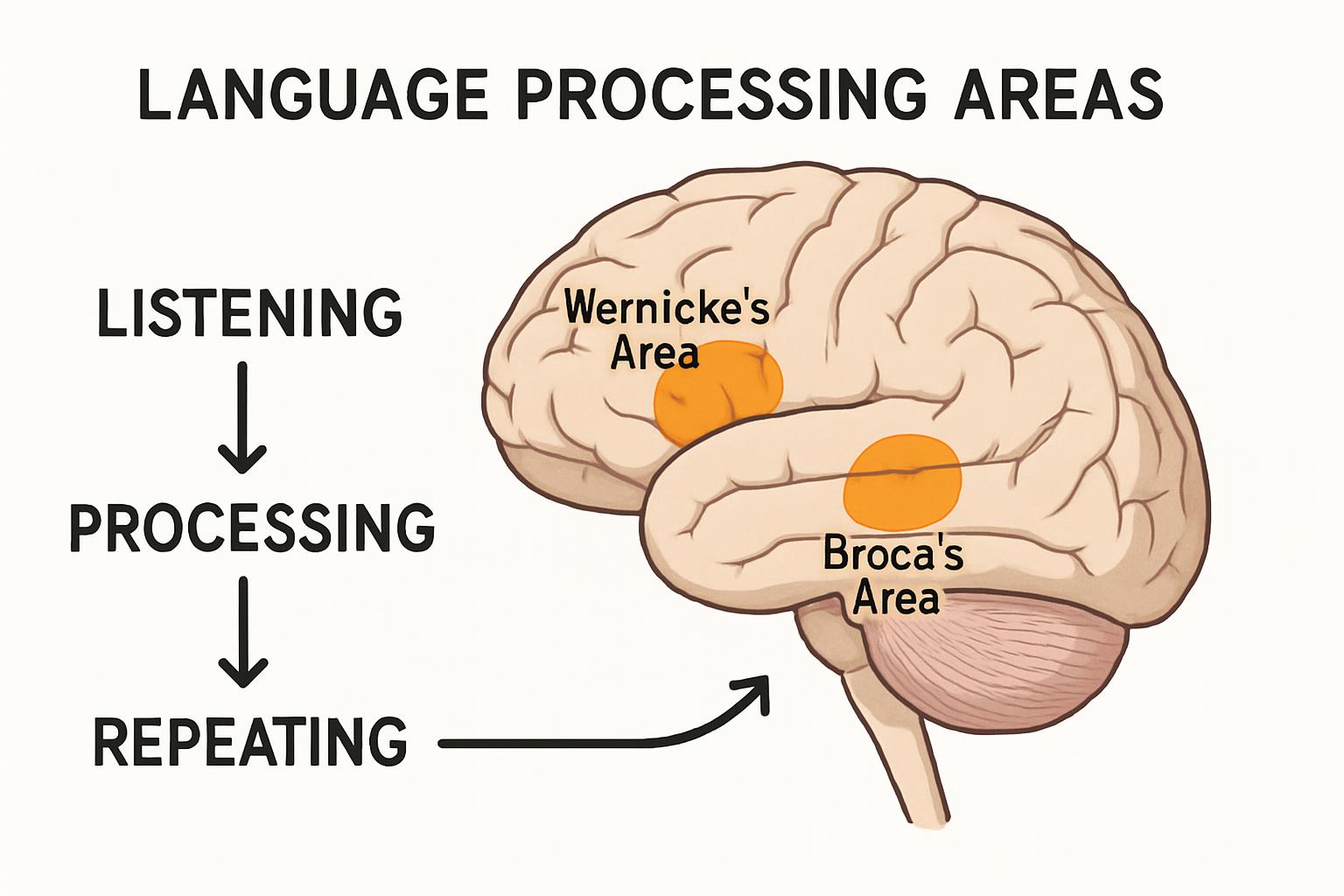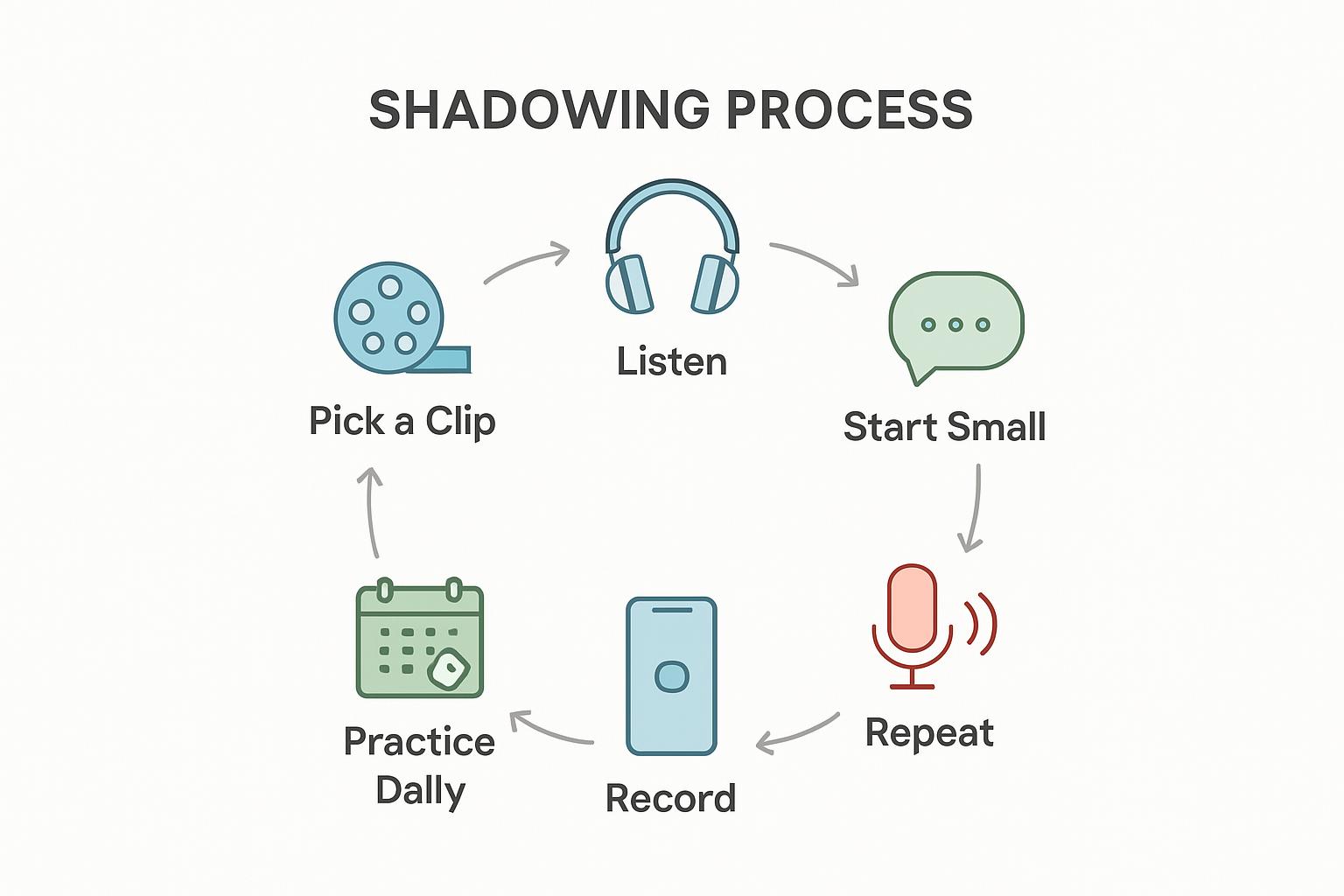Are you struggling to improve your pronunciation and fluency in a new language? The shadowing technique might be the breakthrough you need! This ultimate guide will walk you through everything you need to know about shadowing, from its scientific backing to practical steps for implementation. Whether you're a beginner or an intermediate learner, this method can help you sound more like a native speaker. Let's dive in!
What is the Shadowing Technique?
At its core, the shadowing technique is a powerful language learning method where you listen to a native speaker and repeat what they say, as closely and quickly as possible. Imagine you are their verbal "shadow," mimicking their every word just a split second behind them.
This active listening and speaking exercise, often used by professional interpreters, is a fantastic way to improve your pronunciation, intonation, and natural rhythm. By attempting to copy the speaker in real-time, you train your brain and mouth muscles to produce the language's sounds and flow more naturally—similar to the principles discussed in our guide on Understanding Speech Prosody: Key Elements & Applications. It’s an incredibly effective tool, especially for auditory learners, that you can practice with any audio, from podcasts to your favorite shows. For more structured practice, check out From Beginner to Fluent Speaker: Follow-Along Technique with Studio Tools.
How Does Shadowing Work?
The shadowing technique is powerful because it trains your brain to work like a native speaker's, engaging multiple processes at once. By listening and speaking simultaneously, you create and strengthen the neural pathways for your new language. Think of it as a workout for your mouth and your mind! For more on how prosody (rhythm, pitch, and intonation) enhances this process, check out our guide on Understanding Speech Prosody: Key Elements & Applications.

Essentially, the process breaks down into a rapid, continuous cycle:
- Listen Actively: Your ears tune into more than just words. You absorb the native speaker's specific rhythm, pitch, intonation, and the emotion behind their speech.
- Process Instantly: Your brain works to decode these sounds and connect them to meaning, bypassing the slow step of conscious translation that often trips up learners.
- Repeat Immediately: Without pausing, you vocalize what you hear, mimicking the speaker as closely as possible. It's about matching the music of the language.
This active cycle dramatically improves your processing speed and muscle memory, making your speech more fluid and natural over time. To refine your pronunciation further, explore our Master Pronunciation Evaluation: A Complete Guide for Learners.
Benefits of Shadowing
Why add the shadowing technique to your learning routine? The benefits are immense and can accelerate your progress. By mimicking a native speaker in real-time, you're not just repeating words; you're training your mouth to form new sounds and your ear to catch the natural rhythm and intonation of the language. This leads directly to clearer pronunciation and enhanced fluency, helping you connect words smoothly without hesitation. For deeper insights into mastering these elements, check out our guide on Understanding Speech Prosody: Key Elements & Applications.
Beyond speaking, shadowing dramatically sharpens your listening skills, making you more attuned to subtle nuances you might otherwise miss. As you consistently practice with real-world audio, your confidence will soar, making actual conversations feel less daunting. Scientific studies even show that shadowing significantly boosts language acquisition, proving it's a powerful workout for your speaking abilities. To further refine your pronunciation, explore Master Pronunciation Evaluation: A Complete Guide for Learners.
Common Mistakes and How to Avoid Them
The shadowing technique is incredibly powerful, but a few common pitfalls can slow your progress. By being aware of them, you can ensure your practice is as effective as possible.
-
Speaking Too Slowly: The goal is to speak almost simultaneously with the audio. If you find yourself lagging too far behind, try starting with a slower recording. You can gradually increase the speed as you become more comfortable with the material.
-
Ignoring Intonation: Don't just mimic the words; mimic the music of the language! Pay close attention to the speaker's rhythm, pitch, and emotional tone. This is crucial for sounding natural and fluent. For deeper insights, explore our guide on Understanding Speech Prosody: Key Elements & Applications.
-
Using Unclear Audio: Your repetition can only be as good as your source material. Always choose high-quality recordings where the speaker's pronunciation is crisp, clear, and easy to understand.
-
Skipping Practice: Consistency is more important than duration. A focused 10-minute session every day will yield far better results than one long session per week. Make it a habit
Step-by-Step Guide to Shadowing
Ready to dive in? Follow these simple steps to start using the shadowing technique and see real improvement in your speaking skills.

-
Choose Your Material: Find a short audio or video clip (1-2 minutes) with clear native speech. Podcasts, audiobooks, or movie scenes are perfect starting points.
-
Listen First: Play the audio once without speaking. Focus on the rhythm and intonation to get comfortable with the content's flow before you try to replicate it. For deeper insights into speech patterns, explore our guide on Understanding Speech Prosody: Key Elements & Applications.
-
Start Small: Don't try to shadow the entire clip at once. Begin by repeating just a few words or a short phrase, then gradually build up to full sentences.
-
Repeat Immediately: Play the phrase and mimic it instantly. Try to match the speaker's pronunciation, speed, and rhythm as closely as possible. The goal is to speak almost at the same time.
-
Record Yourself: Use your phone to record your shadowing. Comparing your version to the original is a powerful way to identify differences and track your progress.
-
Practice Daily: Consistency is everything! Just 5-10 minutes of daily practice will train your mouth muscles for new sounds and build incredible momentum. For more efficiency tips, see Boost Your Language Learning Efficiency: Proven Strategies for Mastering Speech.
For a visual guide, check out our embedded video tutorial below.
Tools and Resources for Shadowing
Ready to start your shadowing practice? You don't need much, but the right resources can make a huge difference. These tools provide clear audio and often include transcripts, making the shadowing technique more effective and less intimidating for learners. For a deeper dive into structured learning, check out our guide on From Beginner to Fluent Speaker: Follow-Along Technique with Studio Tools.
- Language Apps: Applications like AiRepeater often have built-in features or exercises designed specifically for shadowing, giving you a structured place to start.
- Podcasts with Transcripts: Find a podcast for learners in your target language. The transcript is your secret weapon, allowing you to follow along and verify words you're unsure of.
- YouTube Channels: Channels like "Easy Languages" are fantastic. They feature real-street interviews, exposing you to natural speech patterns—perfect material for shadowing. To refine your pronunciation further, explore our article on Master Pronunciation Evaluation: A Complete Guide for Learners.
- Audiobooks: Once you're more comfortable, try shadowing an audiobook. This is a great way to practice for longer periods and immerse yourself in the language's rhythm.
Integrating Shadowing with Other Learning Methods
The shadowing technique is incredibly powerful, but it becomes a true fluency accelerator when combined with other study habits. Think of it as one core component of a well-rounded language routine, similar to the strategies discussed in Boost Your Language Learning Efficiency: Proven Strategies for Mastering Speech.
-
Flashcards for Vocabulary: When you encounter a new word while shadowing, add it to a digital flashcard app like Anki. This creates a powerful learning loop: you hear the word in context, practice its pronunciation, and then actively memorize its meaning.
-
Real Conversation Practice: Shadowing builds your speaking muscles and rhythm. Now, put them to the test! Apply the phrases and intonation you've practiced in conversations with native speakers or language partners. For deeper insights into refining your speech patterns, explore Understanding Speech Prosody: Key Elements & Applications.
-
Dedicated Grammar Study: While shadowing perfects your delivery, formal grammar study ensures your accuracy. Understanding the rules helps you build your own correct sentences from scratch.
By integrating shadowing this way, you develop a complete skill set, connecting pronunciation, vocabulary, and structure for true language mastery.
Real-Life Success Stories
Don't just take our word for it—countless learners have transformed their speaking skills using the shadowing technique.
Maria, for instance, dramatically improved her Spanish fluency in just three months. By shadowing native audio daily, she found conversations flowed more naturally. John tackled the notoriously tricky pronunciation of Japanese. Using shadowing apps, he finally mastered the pitch accents that had eluded him—similar to the strategies discussed in our guide on Understanding Speech Prosody: Key Elements & Applications. Meanwhile, Lena built incredible confidence in her French. After six months of consistent practice, she overcame her hesitation to speak.
These stories prove that with dedication, the shadowing technique delivers remarkable and tangible results in your language journey.
The shadowing technique is a powerful tool for improving pronunciation and fluency in any language. By following the steps outlined in this guide and using the recommended tools, you can start seeing results quickly. Don’t forget to share your shadowing experiences with us—we’d love to hear your success stories! Ready to begin? Start shadowing today and take your language skills to the next level.